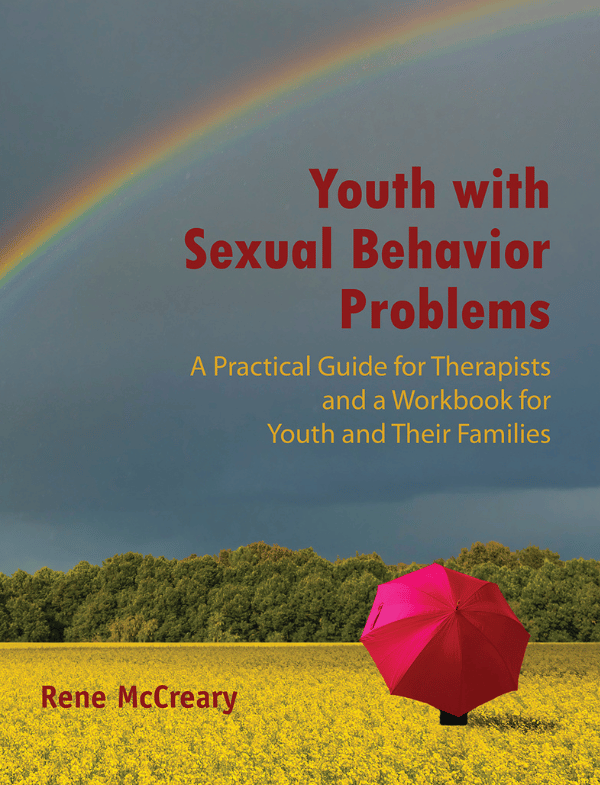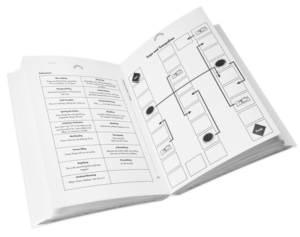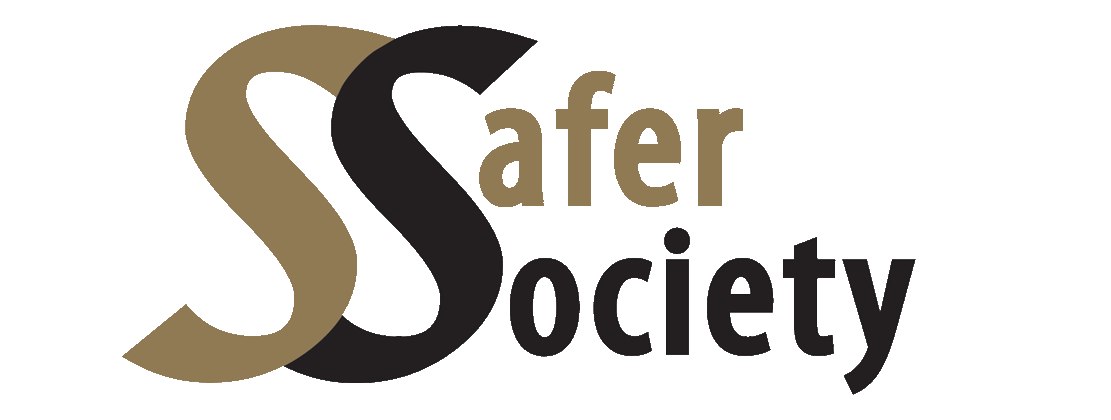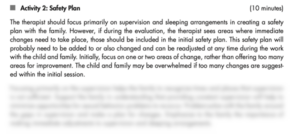Home / Shop / For Youthful Clients / Workbooks for Youthful Clients
Youth with Sexual Behavior Problems

- Description
- Specifications
Youth with Sexual Behavior Problems
A Practical Guide for Therapists and a Workbook for Youth and Their Families
by Rene McCreary, Ed.S., LPC
This practical, research-based workbook offers a family-centered approach to working with children ages 6—13 who have exhibited problematic sexual behaviors (PSB). Created from over three decades of McCreary’s experience working with families and individuals affected by sexual abuse, this resource gives therapists a structured yet adaptable framework through an eight-session core program supplemented by materials to prompt a discussion of pornography.
The workbook is an effective tool for therapists working with young people who have acted out in minor ways and do not require intensive treatment. It may also benefit clients with histories of technology-related sexual misconduct, developmental or social delays, or characteristics on the autism spectrum. Each chapter covers topics essential for working with this population, delivering a flexible short-term evidence-based approach that balances the needs and limitations of both families and treatment providers.
What Makes This Workbook Unique
- Family-Centered Approach: Actively engages caregivers as essential partners in treatment, ensuring continuity of care beyond clinical settings.
- Strengths-Based Methodology: Avoids stigmatization and shame-based intervention while building skills.
- Practical, Ready-To-Use Activities: Features structured, low-preparation activities for immediate clinical use.
- Ideal for In-Home Treatment: Optimized for both in-home and outpatient therapy environments, accommodating diverse treatment contexts.
Chapters
1) Assessment and Safety Planning: The workbook begins by providing therapists with an extensive list of questions to help them evaluate family dynamics, potential risks, and supervision needs. Questions are also provided to help identify family strengths and interests.
2) Boundaries: Activities to help families establish clear guidelines about appropriate behaviors, clothing choices, and personal space. Includes innovative exercises like "Never, Sometimes or If I Request, and Always" and "What Do We Wear?"
3) Feelings Identification: Exercises to recognize emotions and develop language to express feelings, featuring games like "Animal Reactions" and "Glove Box Questions" that promote family communication. Here are a few examples:
Age 5—8:
- When was a time you were scared?
- Tell me when you were the happiest you have ever been.
- What do you like about your best friend?
Ages 9—12:
- Tell me about a time when you did something you didn’t want to do.
- Name three things you do when you are sad.
- What is something you are proud of?
- How do you wish our family were different? Why?
- Tell me about a time that I don’t already know about when you were really angry? What happened? How did you manage the anger?
4) Distress Tolerance: Techniques to help children handle uncomfortable emotions without acting out, including the engaging "Mother Cat and Her Two Kittens" story and practical distress tolerance statements.
5) Impulse Control: Structured activities like "Teamwork Tower Building" and "STOP, THINK, ACT" that teach children to pause before acting and consider consequences.
6) Cognitive Distortions: Games and exercises that identify unhelpful thinking patterns and develop healthier responses, including the innovative "Traps and Trampolines" board game.
“We are going to play a game to help us practice recognizing thinking errors and times when people often use them. On the game board are mouse traps and trampolines. The mouse traps represent cognitive distortions, and the trampolines represent rational responses. The goal is to get to the finish line first, and to do this, it is best not to land on the traps of cognitive distortions! In Traps and Trampolines, just like in life, we move along more swiftly when we are solidly grounded in our better ideas or rational responses.”

7) Family Team Building: Creative activities that strengthen family bonds and communication, helping each member recognize their role in prevention and positive change.
8) Sexuality: Discussions and exercises to help families communicate values around relationships and sexuality, with practical tools for evaluating media messages.
Additional Session - Open Discussion on Pornography: Age-appropriate guidance for families to address the increasing challenge of children’s exposure to pornography.
Proven Effective
Developed at the Metropolitan Organization to Counter Sexual Assault (MOCSA) and used successfully for years with diverse populations, this workbook reflects current research showing that children who receive effective support for PSB can live at home, attend school, and participate in community activities without jeopardizing the safety of others.
This workbook provides a practical path forward for therapists working with a challenging population, offering both structure and flexibility to meet the unique needs of each family while promoting healing and prevention.





